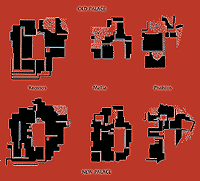 For
a period of about 600 years, palaces were the centres of the political,
economic and religious life of Minoan Crete during the second millenium
BC. The most important palaces were built at the same time, about 1900
BC, in already prosperous urban centres such as Knossos, Phaistos and
Mallia, which were situated in the middle of fertile valleys, or else
in important ports such as Zakros. Apart from the four most significant
palatial centres of Knossos, Phaistos, Mallia and Zakros, there were also
palaces of minor importance controlling smaller regions such as Archanes
and Chania.
For
a period of about 600 years, palaces were the centres of the political,
economic and religious life of Minoan Crete during the second millenium
BC. The most important palaces were built at the same time, about 1900
BC, in already prosperous urban centres such as Knossos, Phaistos and
Mallia, which were situated in the middle of fertile valleys, or else
in important ports such as Zakros. Apart from the four most significant
palatial centres of Knossos, Phaistos, Mallia and Zakros, there were also
palaces of minor importance controlling smaller regions such as Archanes
and Chania.
For some large architectural complexes such as Agia Triada, Gournia or the Little Palace at Knossos, research has not yet been completed, or has shown up a mixture of architectural features. Therefore it is difficult to classify them with any certainty as palaces or villas (a separate category in Minoan settlement tradition).